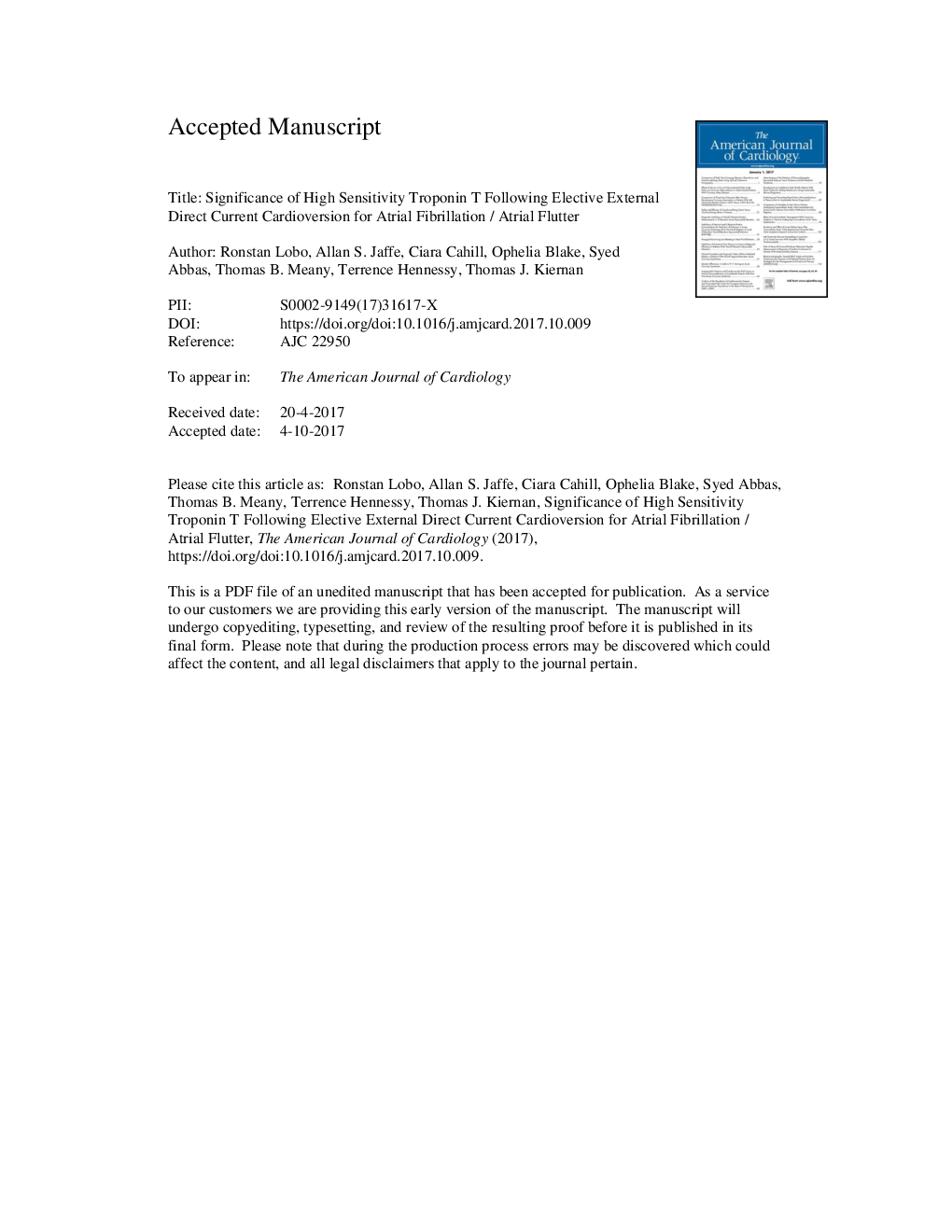| Article ID | Journal | Published Year | Pages | File Type |
|---|---|---|---|---|
| 8651567 | The American Journal of Cardiology | 2018 | 19 Pages |
Abstract
External transthoracic direct current (DC) cardioversion is a commonly used method of terminating cardiac arrhythmias. Previous research has shown that DC cardioversion resulted in myocardial injury as evidenced by increased levels of cardiac troponin, even though only minimally. Many of these studies were based on the outdated monophasic defibrillators and older, less sensitive troponin assays. This study aimed to assess the effect of external transthoracic DC cardioversion on myocardial injury as measured by the change in the new high-sensitivity cardiac troponin T (hs-cTnT) using the more modern biphasic defibrillators. Patients who were admitted for elective DC cardioversion for atrial fibrillation or atrial flutter were recruited. Hs-cTnT levels were taken before cardioversion and at 6 hours after cardioversion. A total of 120 cardioversions were performed. Median (twenty-fifth to seventy-fifth interquartile range) cumulative energy was 161âJ (155 to 532âJ). A total of 49 (41%) patients received a cumulative energy of 300âJ or higher. The median hs-cTnT level before cardioversion was 7âng/L (4 to 11âng/L) and that after cardioversion was 7âng/L (4 to 10âng/L). A Wilcoxon signed-rank test showed no significant difference between pre- and post-cardioversion hs-cTnT levels (Zâ=ââ0.940, pâ=â0.347). In conclusion, external DC cardioversion did not result in myocardial injury within the first 6 hours as measured by high-sensitivity troponin T. Patients who are cardioverted and are found to have a significant increase in cardiac troponin after cardioversion should be assessed for causes of myocardial injury and not assumed to have myocardial injury due to the cardioversion itself.
Related Topics
Health Sciences
Medicine and Dentistry
Cardiology and Cardiovascular Medicine
Authors
Ronstan MB, Allan S. MD, Ciara MSc, Ophelia MD, Syed MB, Thomas B. MD, Terrence MD, Thomas J. MD,
